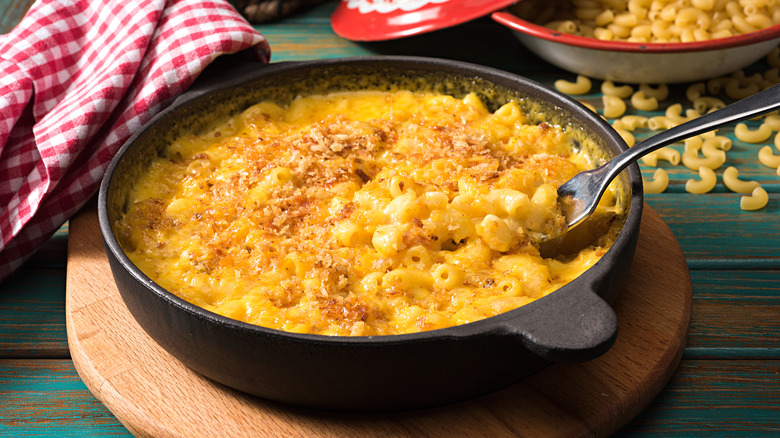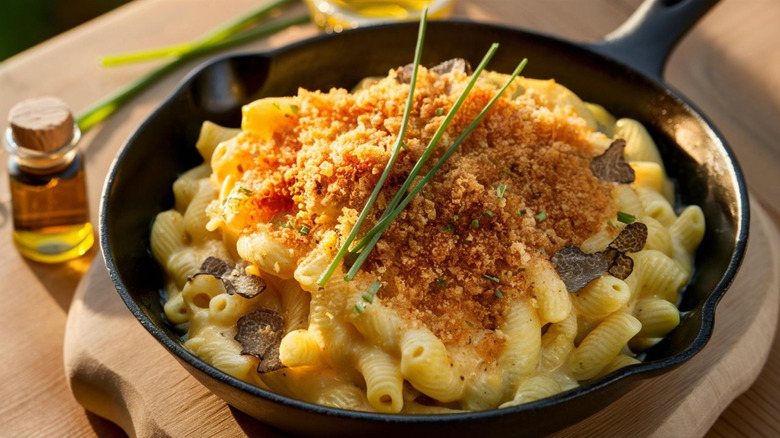How To Reheat Leftover Mac And Cheese For The Best Texture
These days, it seems like there are few things that classic cooking pans can't do. Even mini cast iron skillets are incredibly versatile. Once the most used item in the kitchen, cast iron skillets were briefly relegated to yesteryear with the invention of Teflon. However, they've made a big comeback over the last several decades, and home cooks across the US are rediscovering what our grandmothers already knew; cast iron can cook just about anything, from tender T-bone steaks to last night's dried-out cheesy mac.
When it comes to leftover mac and cheese, it may just be time to ditch the microwave for a more sophisticated technique. We know that a microwaved bowl of cheesy mac just hits different sometimes (there's honestly no better midnight snack). However, if you're looking for ways to seriously upgrade classic mac and cheese, a cast iron skillet is the staple cooking tool you need. Not only does this reheating technique make your mac and cheese warm again, but it also takes it to the next level of flavor, texture, and general deliciousness.
When sautéed in a well-oiled cast iron pan, something magical happens. While the top of the mac and cheese gets creamy and rehydrated, the noodles and cheese touching the pan form a crispy, savory crust that transforms your classic comfort food into truly indulgent cuisine. The best part is that this hack works on almost any type of leftover macaroni and cheese, from the heat-and-eat version at your local grocery store to Homeroom's ultimate mac and cheese recipe.
Tips and tricks to make this technique work
Like any great food hack, reheating your mac and cheese in a cast iron skillet is fairly simple. However, there are a few guidelines that make the reheating process easier and improve the flavor of the final product. The first is to rehydrate your pasta with a little bit of milk. The inside of your refrigerator is cold and dry, which can potentially suck the life out of your leftovers. General guidelines call for several tablespoons of milk for every cup of pasta.
The second tip focuses on prepping your cast iron to take full advantage of its abilities. After adding a smidge of oil with a high smoke point (vegetable or canola works well), preheat your pan until the oil starts to sizzle a little bit. You want the pan to be hot enough to get that gorgeous cheesy bottom crust, but not so hot it burns on contact. Rehydrating your pasta helps with this, as dry pasta would just fry and become a crunchy mess. Moisture protects your pasta from burning and helps it become creamy again.
The final trick is to cover your pasta to help distribute heat evenly throughout the dish. Uncovered pasta releases heat through the top, which risks the bottom scorching before the top is even warm. Covering the pasta traps heat inside the skillet, essentially turning it into a tiny oven. This helps ensure your mac and cheese comes out bubbly and hot all the way through.

